Letter-sound association Normal Letter Recognition Worksheets for Ages 3-9
5 filtered results
-
From - To
Enhance your child’s literacy skills with our "Letter-Sound Association Normal Letter Recognition Worksheets" designed for ages 3-9. Our expertly crafted worksheets help young learners effortlessly pair letters with their corresponding sounds, laying a strong foundation for fluent reading and writing. Each worksheet is carefully designed to make learning engaging and fun, featuring colorful illustrations and interactive activities. Perfect for home or classroom use, these resources cater to all learning styles, ensuring every child progresses confidently. Help your child master the crucial skill of letter-sound association and watch their love for reading and learning grow!
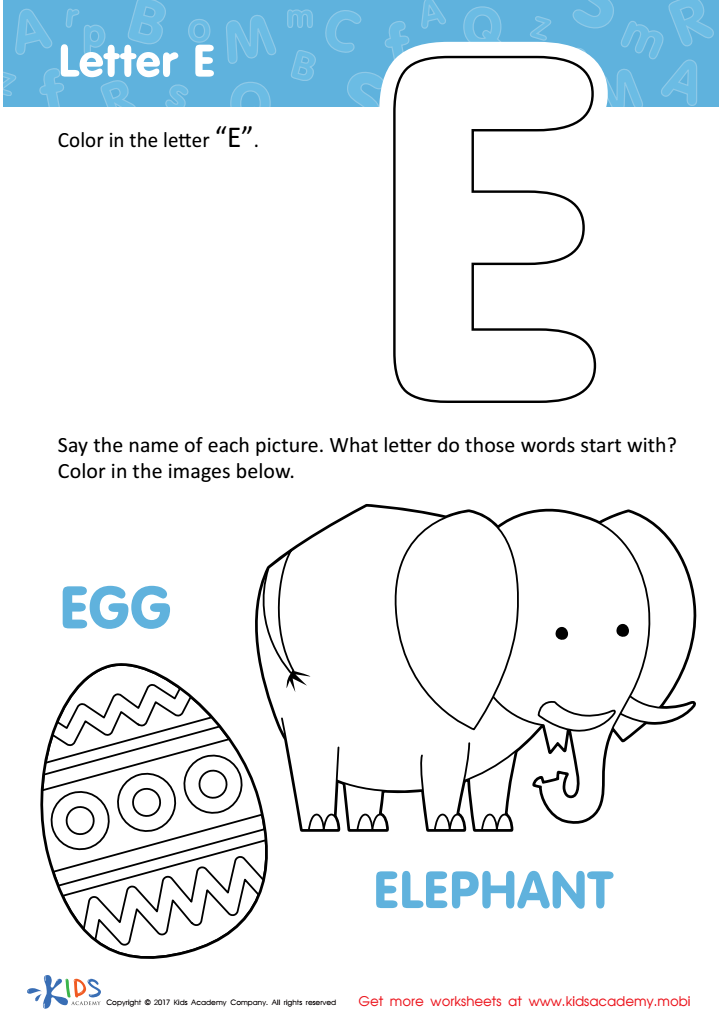

Letter E Coloring Sheet
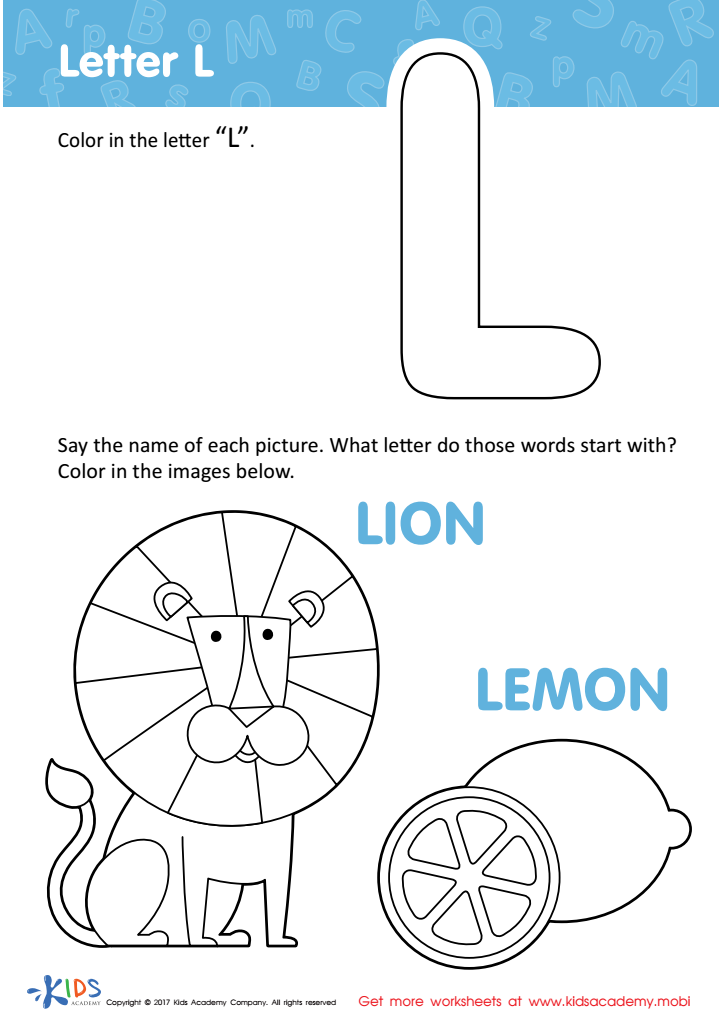

Letter L Coloring Sheet
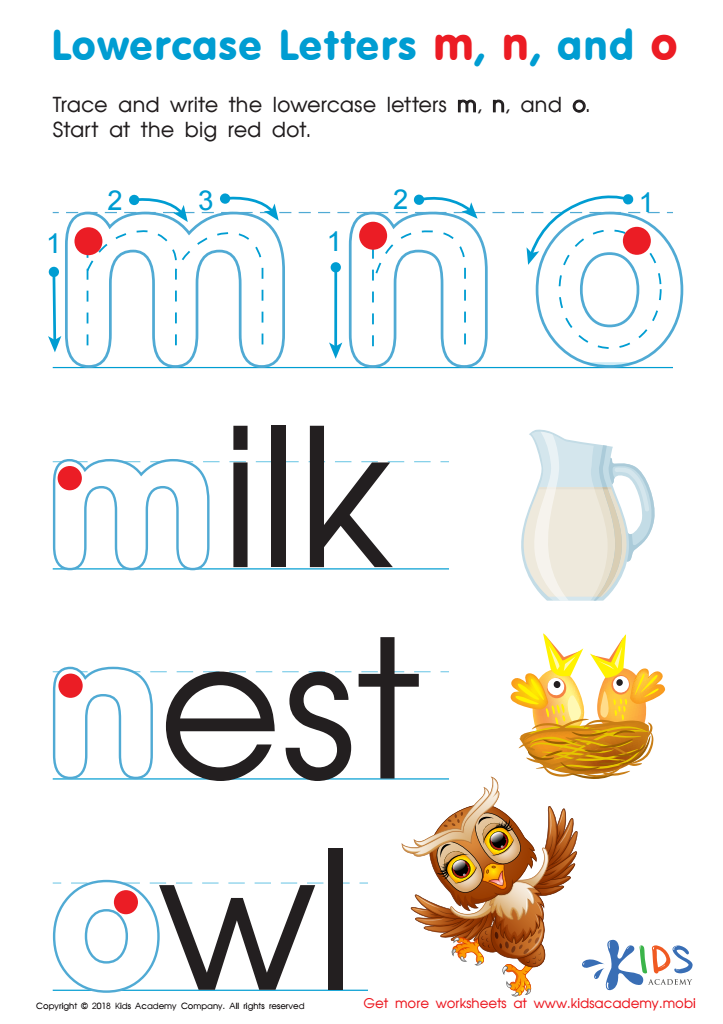

Lowercase Letters m n o Worksheet
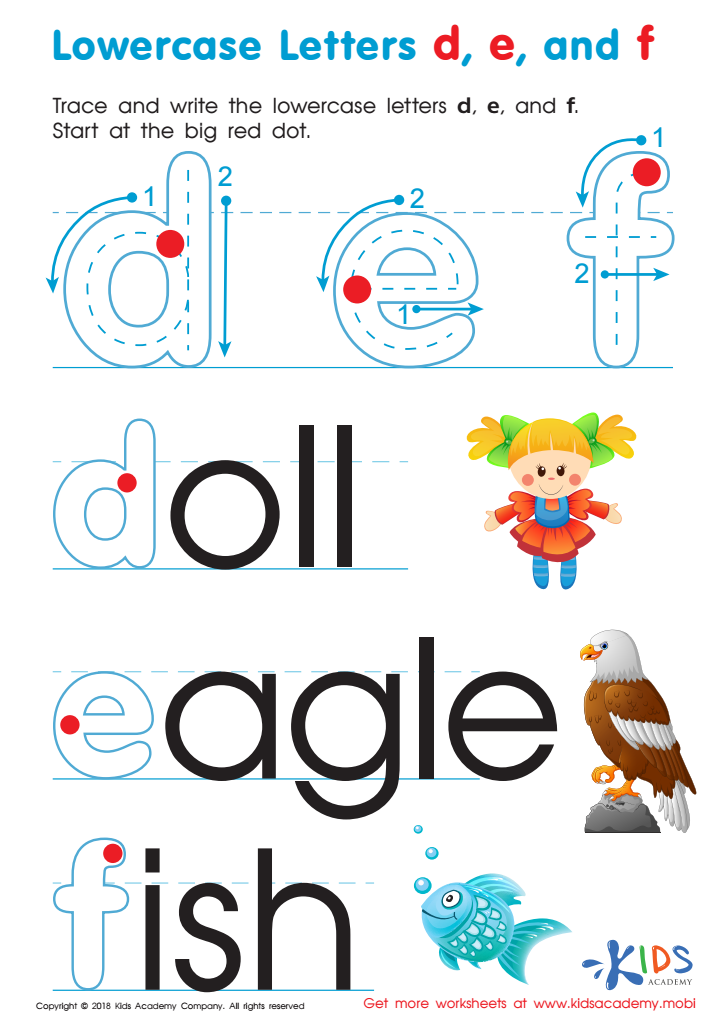

Lowercase Letters d e f Worksheet
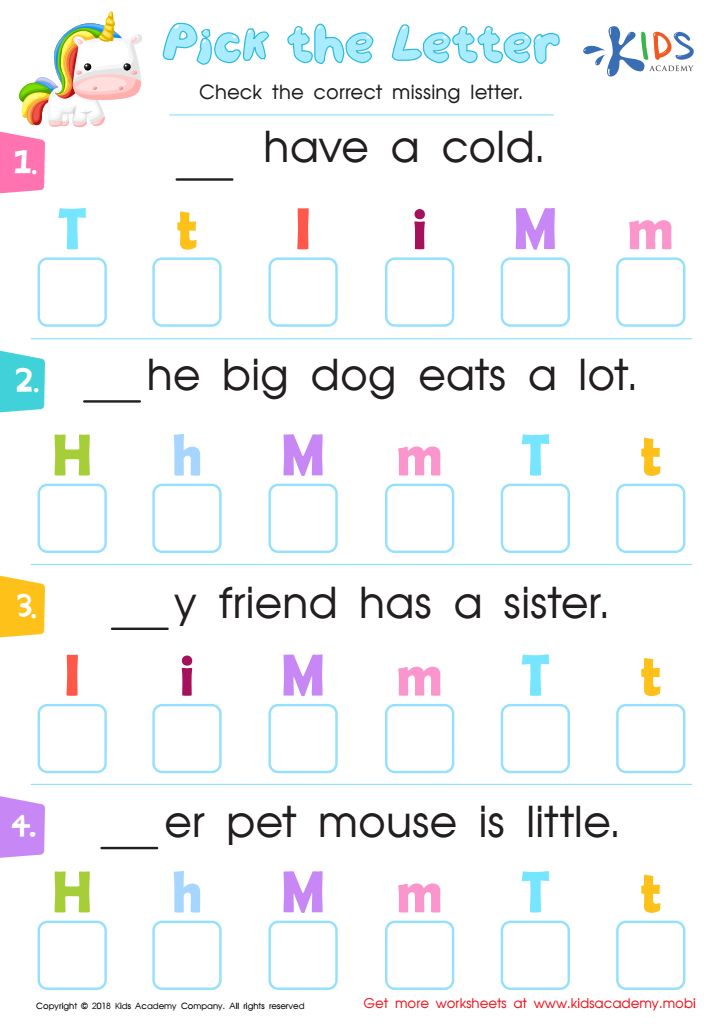

Pick the Letter Worksheet
Letter-sound association and normal letter recognition are foundational skills in early childhood education for ages 3-9. Parents and teachers should prioritize these competencies because they form the building blocks of literacy. By understanding that each letter represents specific sounds, children can decode words and enhance their reading abilities.
When children grasp letter-sound associations, they can begin to blend sounds to form words, which is crucial for reading fluency. This skill also impacts spelling, as children use their knowledge of sounds to write words accurately. Early literacy skills, including letter recognition and phonemic awareness, are strong predictors of future reading success.
Moreover, engaging with these fundamental skills can make reading enjoyable rather than frustrating. Positive experiences in early learning can foster a lifelong love of reading, paving the way for academic achievement.
For instance, recognizing the letter "B" and associating it with the /b/ sound enables a child to decode words like "bat" or "ball."
For teachers, incorporating activities such as phonics games, read-aloud sessions, and letter tracing can support this learning. Parents reinforce these concepts through reading together daily and encouraging playful, educational interactions that highlight letters and sounds.
Overall, consistent, caring attention to letter-sound associations and letter recognition equips children with essential tools for literacy, boosting their confidence, and paving the way for academic success.
 Assign to My Students
Assign to My Students















